
Prince Katsura Tarō was a Japanese politician and general of the Imperial Japanese Army who served as the Prime Minister of Japan from 1901 to 1906, from 1908 to 1911, and from 1912 to 1913.

Jens Kristian Meinich Bratlie was a Norwegian attorney and military officer. He served as an elected official representing the Conservative Party. He was the prime minister of Norway from 1912 to 1913.
The Conservative Party is a liberal-conservative political party in Norway. It is the major party of the Norwegian centre-right, and the leading party in the governing Solberg cabinet. The current party leader is the Prime Minister Erna Solberg. The party is a member of the International Democrat Union and an associate member of the European People's Party.

Carl Joachim "C. J." Hambro was a Norwegian journalist, author and leading politician representing the Conservative Party. A ten-term member of the Parliament of Norway, Hambro served as President of the Parliament for 20 of his 38 years in the legislature. He was actively engaged in international affairs, including work with the League of Nations (1939–1940), delegate to the UN General Assembly (1945–1956) and member of the Norwegian Nobel Committee (1940–1963).

The Minister of Foreign Affairs is a councilor of state and chief of the Norway's Ministry of Foreign Affairs. Since 20 October 2017, the position has been held by Ine Eriksen Søreide of the Conservative Party.
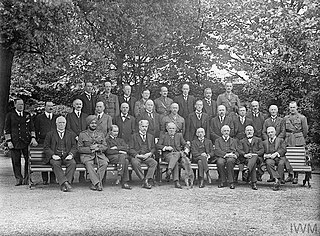
Liberal David Lloyd George formed a coalition government in the United Kingdom in December 1916, and was appointed Prime Minister of the United Kingdom by King George V. It replaced the earlier wartime coalition under H. H. Asquith, which had been held responsible for losses during the Great War. Those Liberals who continued to support Asquith served as the Official Opposition. The government continued in power after the end of the war in 1918, though Lloyd George was increasingly reliant on the Conservatives for support. After several scandals including allegations of the sale of honours, the Conservatives withdrew their support after a meeting at the Carlton Club in 1922, and Bonar Law formed a government.

In the United States Senate elections of 1912 and 1913, Democrats gained control of the Senate from the Republicans. Of the 32 seats up for election, 17 were won by Democrats, thereby gaining 4 seats from the Republicans. Two seats were unfilled by state legislators who failed to elect a new senator on time. They were the last Senate elections held before ratification of the 17th Amendment, which established direct elections for all seats in the Senate.

Bernhard Cornelius Brænne was a Norwegian factory owner and member of the Norwegian Parliament with the Conservative Party.
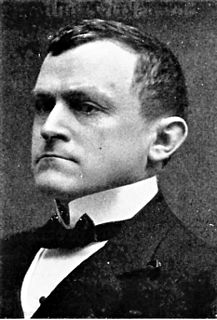
Hans Jørgen Darre-Jenssen was a Norwegian engineer and politician for the Free-minded Liberal Party. He was the Minister of Labour from 1910 to 1912, and thereafter served as director of the Norwegian State Railways.
Erik Mathiassen Enge was a Norwegian politician for the Free-minded Liberal Party and later the Agrarian Party. He served as Minister of Agriculture from 1912 to 1913. From 1927 to 1930, he was the leader of the Agrarian Party. Enge was a farmer by profession.
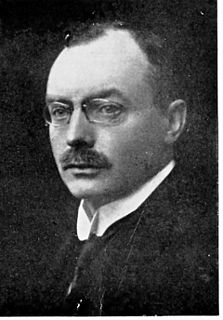
Fredrik Ludvig Konow was a Norwegian businessman and a politician for the Free-minded Liberal Party.
Events in the year 2005 in Japan.
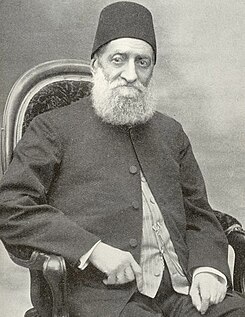
Mehmed Kâmil Pasha, also spelled as Kiamil Pasha, was an Ottoman statesman and liberal politician of Turkish Cypriot origin in the late-19th-century and early-20th-century. He was the Grand Vizier of the Empire during four different periods.

The Ninth Canadian Ministry was the first cabinet chaired by Prime Minister Sir Robert Borden. It governed Canada from 10 October 1911 to 12 October 1917, including only the 12th Canadian Parliament. The government was formed by the old Conservative Party of Canada. The Conservatives governed in coalition with the Liberal-Conservative Party until 12 October 1916 when the last Liberal-Conservative cabinet minister, Sam Hughes, was dismissed. Borden was also Prime Minister in the Tenth Canadian Ministry, which he formed for the coalition government with the Liberals.

Johannes Irgens was a Norwegian barrister, diplomat and politician, noted for his service as minister of foreign affairs of Norway from 1910 to 1913.

Konow's Cabinet was a Norwegian cabinet, formed by a coalition of the Conservative Party and the Free-minded Liberal Party. It was in office from 2 February 1910 to 20 February 1912.

Anna Georgine Rogstad was a Norwegian politician, women's rights activist and educator. A member of the conservative-liberal Liberal Left Party, she was Norway's first female Member of Parliament. A teacher by profession, Rogstad was deeply involved in the educational policies of the nation. She was a prominent leader in the women's rights movement and the campaign for women's right to vote, and was a co-founder and board member of the Norwegian Association for Women's Rights and board member of the Association for Women's Suffrage. In 1911 she met in parliament as a deputy representative for Jens Bratlie, and held this position full-time after Bratlie became Prime Minister in 1912.
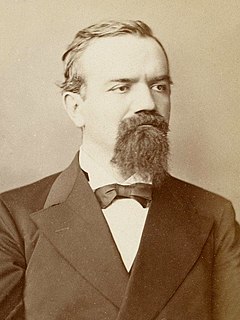
The first cabinet of Titu Maiorescu was the government of Romania from 14 October 1912 to 31 December 1913.

Knudsen's Second Cabinet was the government of Norway from 31 January 1913 to 21 June 1920, led by prime minister Gunnar Knudsen. It was a Liberal Party minority government. It was formed following Jens Bratlie's defeat in the 1912 election.
















